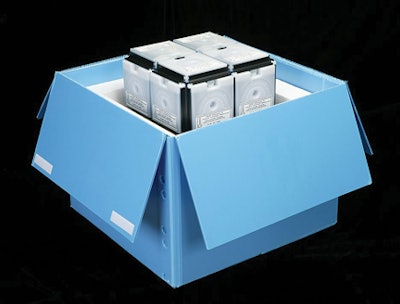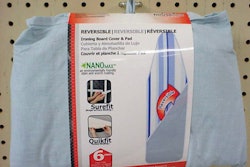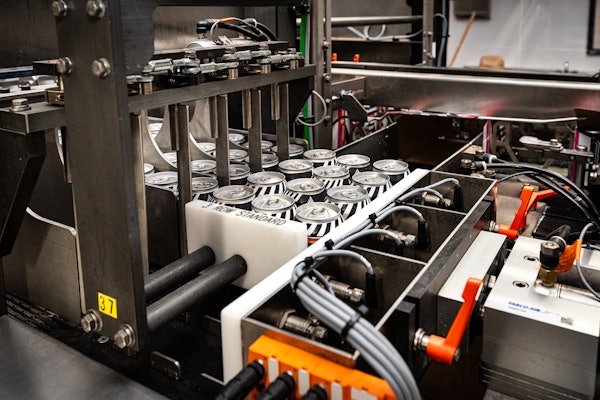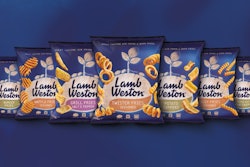Cryopak Industries, Inc. Explains Cryopak director of marketing Bill Hingle, conventional shippers that use gel packs with a freeze and thaw point of 0°C as a refrigerant require a number of the packs at various “states of conditioning,” for example frozen and refrigerated, to maintain this temperature range. “The net result is a package that is much bigger and much heavier than the TimeSaver72,” he says. Phase 5 has a phase point of 5°C, meaning it freezes and thaws at 5°C, keeping product in the TimeSaver72 stabilized within the critical 2°C to 8°C range.
The TimeSaver72 is designed with a payload size of 11x11x5.5 in., or 500 cu in., and a payload weight capacity from 1 to 7.5 lb. The shipper’s overall dimensions measure 22x22x16 in. Other components used in the TimeSaver72 include additional Cryo-Gel gel packs, 3-in. expanded PS panels, and an outer corrugated case made from either reusable plastic or paperboard. Phase 5 PCM is contained in a HDPE bottle designed for reuse.
When comparing a conventional shipper to the TimeSaver72, four conventional boxes, each with a payload capacity of 125 cu in., weighing a total of 120 lb, would be required to ship the same amount of product as just one TimeSaver72 weighing 30 lb. Commented one Package Awards judge, “Four times the freight efficiency is a long-term winner in my book.”
The sustainability of the TimeSaver72 is further enhanced by a choice of packaging components and end-of-life options. Explains Cryopak’s entry form, “Clients can select a standard paper box or plastic outer corrugated for reuse applications. The EPS insulating material can be specified using a recycled, pharmaceutical-grade material ranging from 0% to 20% regrind material.”
Depending on the customer’s preference, the entire TimeSaver72 can be reconditioned for use, or various components can be reconditioned, reused, or recycled. Says Hingle, “I think that is one of the unique features of the design—that there are multiple tiers of reuse and recyclability that can be done with that particular design.”
Lately, says Hingle, customers are finding more and more applications for the shipper as they begin implementing more sustainability initiatives. “The difference is that customers are starting to view the economics behind their packaging totally different from how they had even two or three years ago,” he says. “The price of the TimeSaver72 is more expensive than a conventional shipper, but the total cost—which factors in the price of the packaging, plus the transportation cost for shipping something smaller and lighter and warehousing something smaller and lighter, and then factoring in some portion of reusability—is what they are looking at.”


























